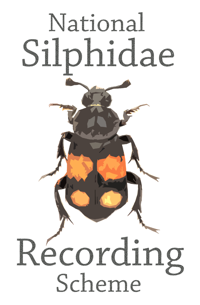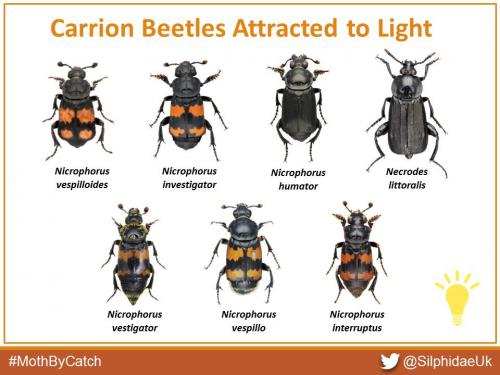
The National Silphidae Recording Scheme collates records for beetles in the family Silphidae. The scheme was established in spring 2016 and is organised by Ashleigh Whiffin, Matthew Esh and Richard Wright.
The silphid beetles are a very interesting group of insects, many of them associated with carrion. Species in genus Nicrophorus, commonly referred to as Sexton beetles, are well known for their habits of burying small vertebrate carcasses. This group also display bi-parental care, a rare trait among beetles and for this reason are increasingly being used in behavioral research. Other carrion dwellers include Necrodes littoralis and the Thanatophilus species. The very distinctive species Oiceoptoma thoracicum is less specific, and can be found on carrion, dung and fungi. The group also contains some predatory species; Phosphuga atrata (hunts snails) and Dendroxena quadrimaculata (hunts caterpillars).
There are only 21 species recorded from the UK and most of these are reasonably large in size, making identification a little bit easier than some groups! We have produced a key to the species (updated for 2019):
- PDF key to British Silphidae [2 MB]
Records can be sent in to the scheme by adding them to iRecord, using the iRecord app, or sending in details via spreadsheet or database export. For more information contact Ashleigh, Matthew and Richard at brc@ceh.ac.uk or via Twitter at @SilphidaeUk.
Eight species are regularly attracted to light-traps (click on the graphic below), so if you run a trap for moths or other insects please look out for silphids as well!
